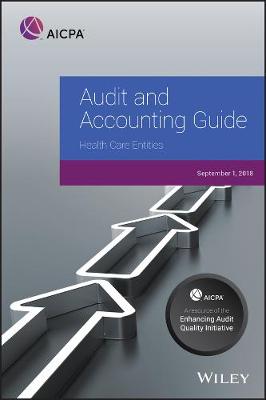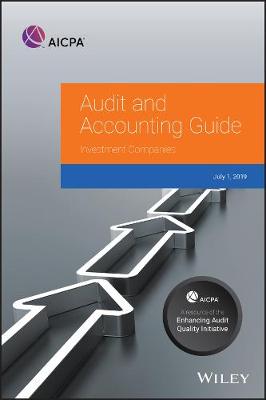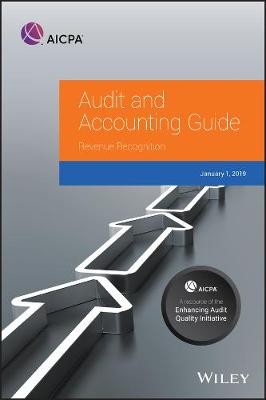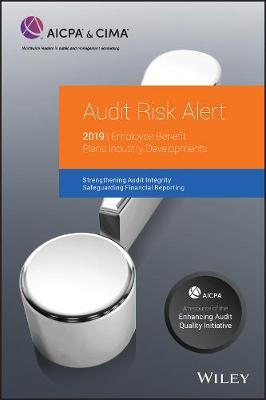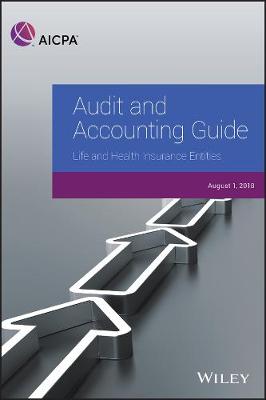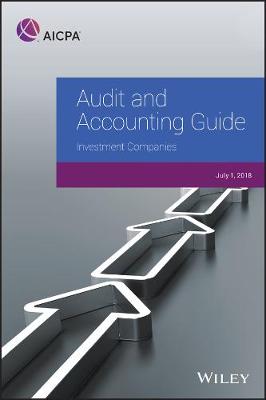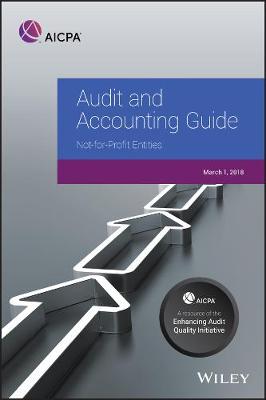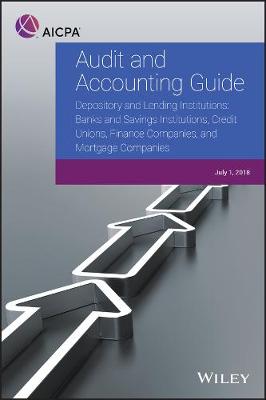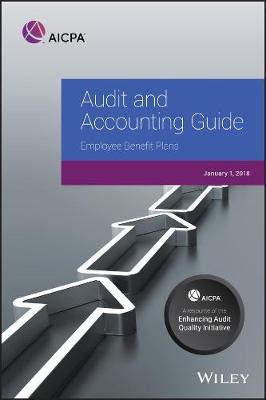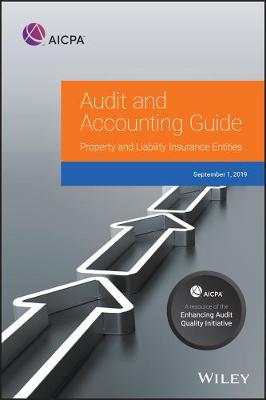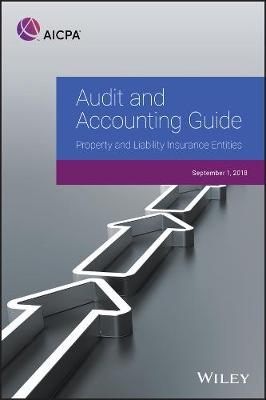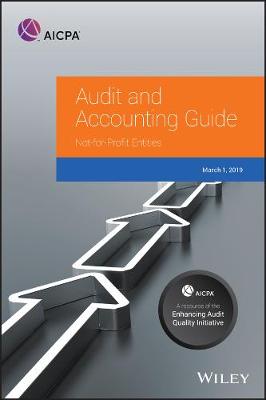AICPA Audit and Accounting Guide
16 total works
Updates include:
FASB ASU No. 2014-09, Revenue from Contracts with Customers (Topic 606)
FASB ASU No. 2016-01, Financial Instruments - Overall (Subtopic 825-10) Recognition and Measurement of Financial Assets and Financial Liabilities
FASB ASU No. 2016-14, Not-for-Profit Entities (Topic 958): Presentation of Financial Statements of Not-for-Profit Entities
SAS No. 133, Auditor Involvement With Exempt Offering Documents
GASB Statement No. 75, Accounting and Financial Reporting for Postemployment Benefits Other Than Pensions (and Certain Issues Related to OPEB Plan Reporting)
GASB No. 83, Certain Asset Retirement Obligations
Whether you are a financial statement preparer or auditor, it is critical to understand the complexities of the specialized accounting and regulatory requirements for investment companies. Your industry standard resource, this 2019 edition supports practitioners in a constantly changing industry landscape. Packed with continuous regulatory developments, this guide covers:
- Authoritative how-to accounting and auditing advice, including implementation guidance and illustrative financial statements and disclosures;
- Details on the changes to illustrated financial statements and disclosures resulting from guidance that was recently-issued or became recently effective (for example, SEC's release, "Disclosure Update and Simplification");
- 2019 updates include:References to appropriate AICPA Technical Questions and Answers that address when to apply the liquidation basis of accounting and appendices discussing the new standard for financial instruments, common or collective trusts and business development companies.
Finally, this guide features a schedule of changes which identifies where to find updated content and the associated reasons for the changes.
For preparers, this guide provides the comprehensive, reliable accounting implementation guidance you need to unravel the complexities of this new standard. For practitioners, it provides in-depth coverage of audit considerations, including controls, fraud, risk assessment, and planning and execution of the audit. Recent audit challenges are spotlighted to allow for planning in avoiding these new areas of concern.
This guide includes 16 industry-specific chapters for the following industries: Aerospace and Defense, Airlines, Asset Management, Broker-Dealers, Construction Contractors, Depository Institutions, Gaming, Health Care, Hospitality, Insurance, Not-for-Profits, Oil and Gas, Power and Utility, Software, Telecommunications, and Timeshare.
The increasing complexity of employee benefit plan auditing and focus by the Department of Labor have resulted in significant pressure for CPAs and firms performing EBP audits. To help CPAs meet the challenge of performing quality audits in this unique and complex area, the AICPA has developed this alert to assist in identifying current sources of risk within EBP audit engagements.
Written by a task force consisting of current and former employee benefit plan expert panel members, this alert features discussions on new developments and issues that auditors may face in their current audits, as well as a look at what's in the pipeline that may affect your engagements.
Updates in 2019:
- FASB ASU No. 2017-06, Employee Benefit Plan Master Trust Reporting
- FASB ASU No. 2018-09, Codification Improvements
- FASB ASU No. 2018-13, Fair Value Measurement (Topic 820), Disclosure Framework–Changes to the Disclosure Requirements for Fair Value Measurement
Audit and Accounting Guide: Life and Health Insurance Entities 2018
by AICPA
This book helps simplify the complexities of insurance entity regulatory compliance. Whether performing audit engagements or management at an insurance entity, the 2018 edition of this guide is a must-have resource to keep abreast of recent regulatory changes related to the life and health insurance industry, its products and regulatory issues, and the related transaction cycles that an insurance entity is involved with.
New to the 2018 edition: This edition covers recent regulatory updates related to the Affordable Care Act and provides guidance for new standards that impact life and health insurance, including revenue recognition, financial instruments, leases, and more.
Financial Statement Presentation
Auditors' Reports
Required Supplementary Information
Preparation, Compilation, and Review Engagements
Liabilities and Deferred Credits
Capital
Revenue and Expense
Specialized Industry Problems
Specialized Organizational Problems
Audit Fieldwork
Attestation Engagements
Updates to this annual publication include: New Q&As for investment companies’ long-term investments (section 69102220), and internal control multiemployer plans (section 82006935), definition of a public business entity (section 7100), partnerships (section 7200), and auditors' reports - other reporting issues (section 9160) have been added!
This guide is the industry standard resource, supporting practitioners in a constantly changing industry landscape packed with continuous regulatory developments.
Updates include:
References to appropriate AICPA Technical Questions and Answers that address when to apply the liquidation basis of accounting.
Appendices discussing the new standards for financial instruments, leases and revenue recognition.
Appendices discussing common or collective trusts and business development companies.
The 2018 edition includes guidance on financial reporting changes, reporting donated services between affiliated NFPs, split-interest agreements, contributions and grants, functional expenses and joint costs, and much more. This new edition provides a comprehensive discussion of FASB ASU No. 2016-14, Not-for-Profit Entities (Topic 958): Presentation of Financial Statements of Not-for-Profit Entities. The discussion includes highlights of the changes that will assist financial statement preparers with implementing the standard. The guide offers dual guidance throughout, providing readers with the “before-and-after” context to enhance their understanding of the changes, as well as two all-inclusive appendices.
Updates include:
Q&A section 2220.27, "Determining When the Practical Expedient is Not Used or Not Available"Q&A section 2220.28, "Definition of Readily Determinable Fair Value and Its Interaction with the NAV Practical Expedient"SAS No. 132, The Auditor's Consideration of an Entity's Ability to Continue as a Going ConcernPCAOB Release No. 2015-008, a oeImproving the Transparency of Auditsa ?AS 3101, The Auditor's Report on an Audit of Financial Statements When the Auditor Expresses an Unqualified OpinionSSAE No. 18, Attestation Standards: Clarification and Recodification
Stay up-to-date on current GAAP and statutory accounting and audit guidance for property and liability insurance entities. This guide provides a good grounding on the industry, its products and regulatory issues, and the related transaction cycles that a property and liability insurance entity is involved with.
Relevant guidance contained in standards issued through September 1, 2019, is covered, including the following:
- FASB ASU No. 2017-12, Derivatives and Hedging (Topic 815): Targeted Improvements to Accounting for Hedging Activities
- SSAP No. 26R, Bonds
- SSAP No. 43R, Loan-backed and Structured Securities
- SSAP No. 97, Investments in Subsidiary, Controlled and Affiliated Entities
- Revised for SSAP No. 101, Income Taxes, and NAIC INT 18-03, Additional Elements Under the Tax Cuts and Jobs Act
Key topics covered:
- Understand current GAAP and statutory accounting for property and liability insurance entities.
- Get authoritative accounting and auditing guidance applicable to property and liability
- Understand current GAAP and statutory accounting for property and liability insurance entities.
- Get authoritative accounting and auditing guidance applicable to property and liability insurance entities.
- Properly develop an audit plan for auditing loss reserves.
- Easily educate your staff on property and liability insurance.
Considered the industry's standard resource, this guide will help accountants, auditors, and financial managers to understand the complexities of the specialized accounting and regulatory requirements of the health care industry. Updated for 2019, this edition has been prepared and reviewed by industry experts and provides hands-on, practical guidance for those who work in and with health care entities.
A critical resource for auditors, this edition includes new accounting standards and relevant GASB and FASB updates (including those related to private companies).
Get authoritative accounting and auditing guidance. Educate staff on the property and liability insurance industry, its products and regulatory issues, and the related transaction cycles an insurance entity is involved with. This guide contains updates on current GAAP and statutory accounting and audit guidance, as well as relevant guidance contained in standards issued through September 1, 2018 which have a major impact on insurance entities, including:
- FASB ASU No. 2016-01 and AICPA Q&A Section 7100.15: Insurance Companies and the Definition of Public Business Entity
- Revenue Recognition Implementation Issue: Considerations for Applying the Scope Exception in FASB ASC 606-10-15-2 and 606-10-15-4 to Contracts Within the Scope of FASB ASC 944
From financial reporting to revenue recognition to grants and contracts, you have a lot going on in the not-for-profit financial arena right now. Whether you're already an expert in NFP audit and accounting standards or just getting started, we’ve got the practical guidance you need.
This must-have resource for nonprofits accounting and auditing professionals is an essential reference which will assist you with the unique aspects of accounting and financial statement preparation and auditing for not-for-profit entities. The 2019 guide will help you do the following:
Understand and implement recent updates and changes, including those related to financial reporting, revenue recognition, and grants and contracts
Gain a full understanding of the accounting issues unique to not-for-profit entities
A must-have resource for accounting and auditing professionals who work with nonprofits, this essential reference will assist in the unique aspects of accounting and financial statement preparation and auditing for not-for-profit entities.
This guide is an ideal roadmap to compliance, giving auditors authoritative guidance, practical tips, and illustrative examples to help them at each stage of the audit. It is designed to bridge the gaps between the what, why, and how to satisfy auditor responsibilities.
Key topics covered include:
- Essential guidance for application of GAAS in an EBP audit.
- References to authoritative accounting guidance for defined contribution (DC), defined benefit (DB) and health and welfare (HW) plans in FASB ASC
- Guidance on accounting, reporting and disclosure for EBP transactions not addressed in FASB ASC as supported by FinREC
- Use of a SOC 1 report
- Use of a specialist (including actuaries and appraisers)
- Forming an opinion and reporting on EBP financial statements (for full and limited scope EBP audits)
- Illustrative auditor communications and financial statements
- Explanation of pervasive regulatory requirements (DOL rules and regulations)
